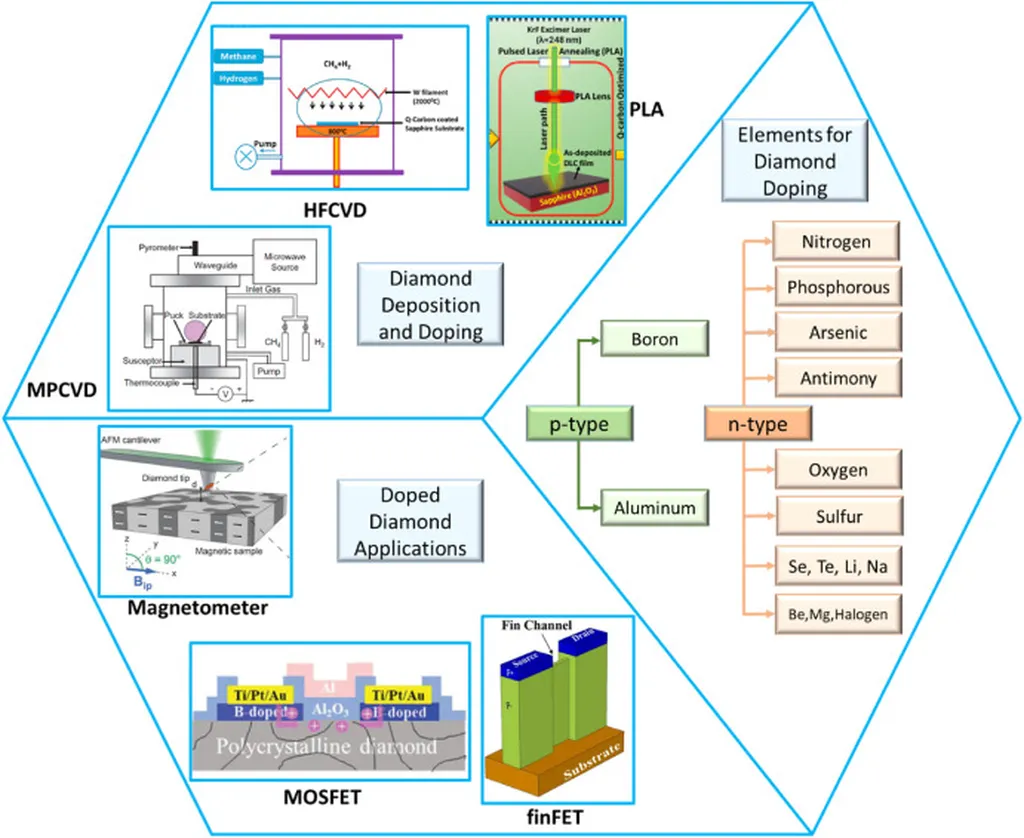In the pursuit of more efficient and powerful electronic devices, heat dissipation remains a critical challenge, particularly for high-power, high-electron-mobility transistors based on wide band-gap semiconductors like gallium nitride (GaN). A recent study published in *Functional Diamond* (which translates to *Functional Diamond* in English) offers a promising solution to this problem, with significant implications for the energy sector.
Researchers, led by Kongping Wu from the School of Electronics and Information Engineering at the Jinling Institute of Technology, have employed advanced deep learning-enhanced non-equilibrium molecular dynamics (NEMD) simulations to investigate thermal transport across aluminum nitride (AlN)/diamond interfaces. The study focuses on quantifying the impact of carbon vacancies on interfacial thermal conductance (ITC), a key factor in heat dissipation.
Diamond is known for its excellent thermal properties, making it an ideal heat sink for high-power devices. However, the GaN/diamond interfaces often suffer from low thermal conductance due to phonon mismatch. AlN interlayers can mitigate this issue, but processing-induced carbon vacancies and subsurface disorder near the AlN/diamond interface can create a new thermal bottleneck.
The research reveals that the ITC for AlN-Al/C(1 1 1) depends non-monotonically on the carbon vacancy concentration. “The ITC peaks at 151.7 MW·m−2K−1 at a carbon vacancy concentration of 2.4%,” explains Wu. “This peak is due to the formation of resonant vibrational states that bridge the phonon gap and promote phonon delocalization, enabling efficient tunneling across the interface.”
However, beyond this optimal concentration, vacancy clustering induces destructive phonon interference, strong scattering, and severe localization effects, leading to a sharp decline in ITC. This finding provides a pathway for optimizing AlN thermal bridges to achieve low thermal resistance in GaN-on-diamond devices through precise control of vacancy concentration and crystallinity.
The implications of this research are significant for the energy sector. Efficient heat dissipation is crucial for the performance and longevity of high-power electronic devices, which are integral to renewable energy systems, electric vehicles, and other advanced technologies. By optimizing the thermal properties of GaN-on-diamond devices, this research could contribute to the development of more efficient and reliable energy solutions.
As Wu notes, “This work not only advances our understanding of thermal transport at the atomic scale but also offers practical strategies for enhancing the performance of high-power electronic devices.” The study published in *Functional Diamond* represents a significant step forward in the field of thermal management, with potential applications that extend far beyond the laboratory.

